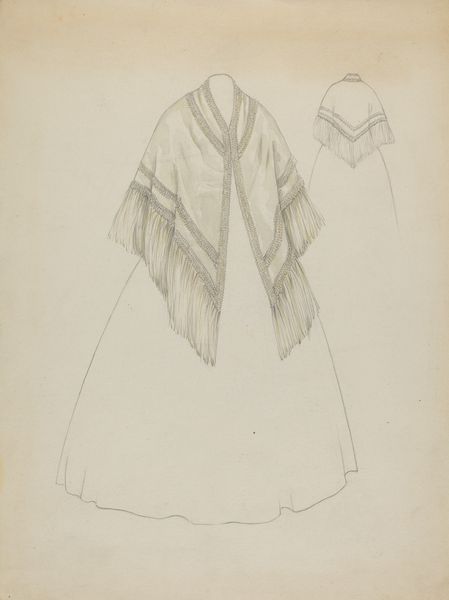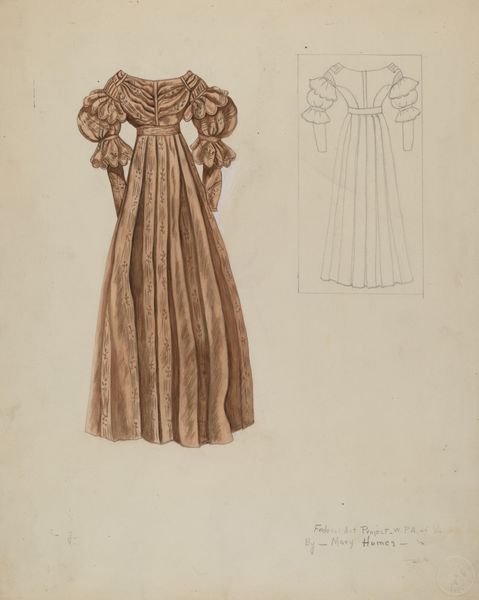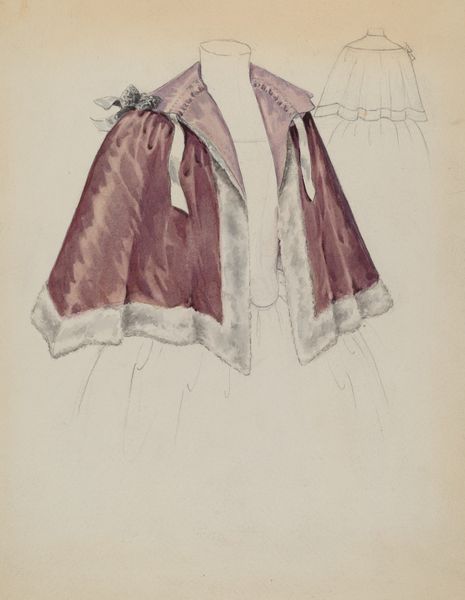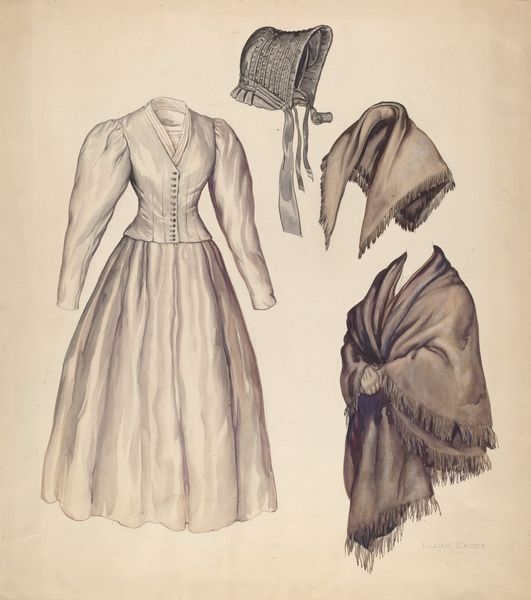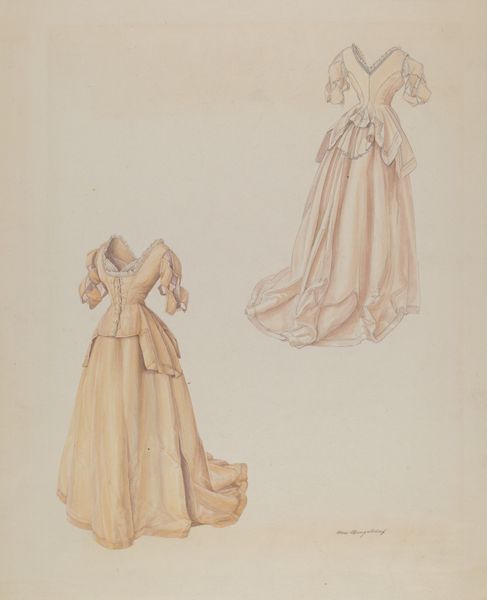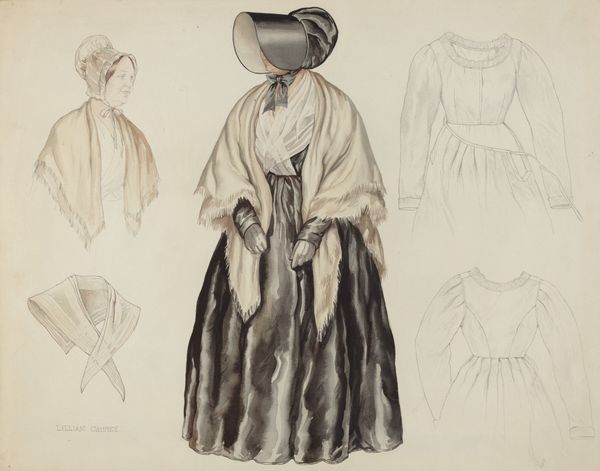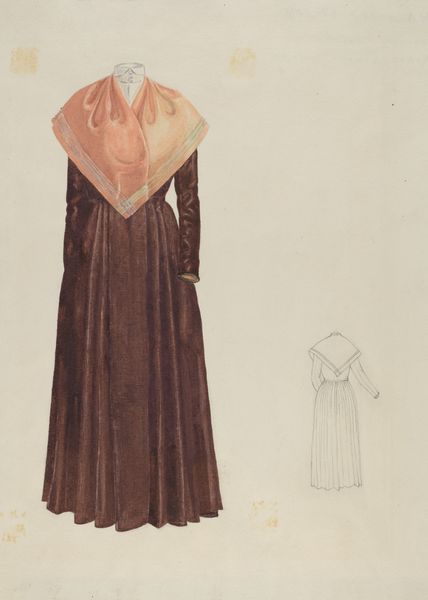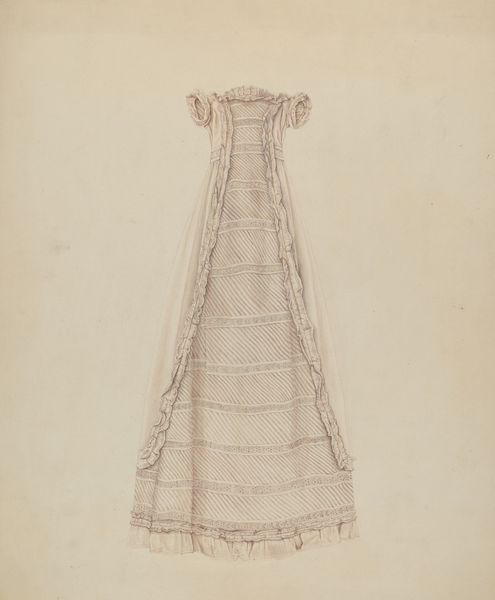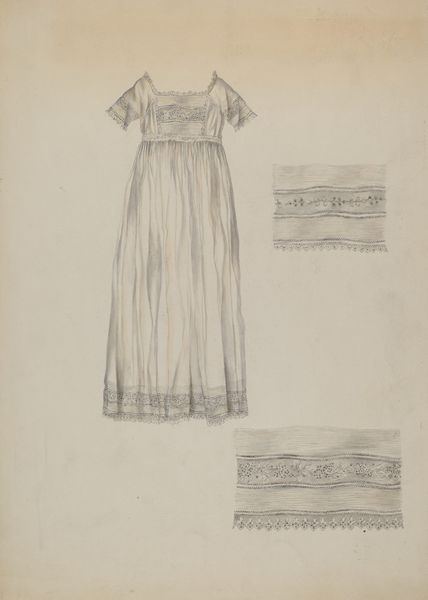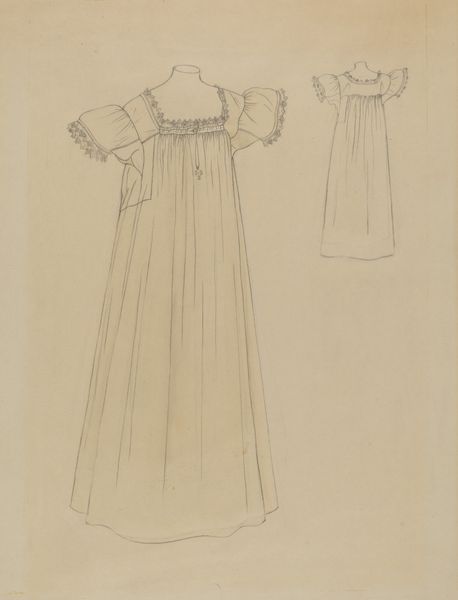
drawing, paper, watercolor, pencil
#
portrait
#
drawing
#
figuration
#
paper
#
watercolor
#
pencil drawing
#
pencil
#
watercolor
#
realism
Dimensions: overall: 36.7 x 28.1 cm (14 7/16 x 11 1/16 in.)
Copyright: National Gallery of Art: CC0 1.0
Curator: Here we have Lillian Causey's watercolor and pencil drawing, "Quaker Dress," created around 1937. Editor: Immediately, I'm struck by the muted tones. It's incredibly delicate, almost ghostly. It feels like looking at something preserved behind glass, an artifact imbued with history. Curator: Indeed. The Quaker dress carries a heavy weight of symbolism. The simple, unadorned clothing is emblematic of the Quaker commitment to plainness and spiritual focus, rejecting worldly vanity. It’s an external representation of internal conviction. Editor: I see that. But I also notice the precise rendering of the fabric. The folds, the sheen… There's a real attention to the textile itself, suggesting an appreciation for the craft involved. Perhaps the very act of drawing, of representing this dress, was a way of understanding its material reality and the labor that went into its making. Curator: Certainly. The drawing invites contemplation on the values embedded in this garment. Consider, too, the ghostly suggestion of the wearer. Absence is palpable. This dress is a vessel containing memory, culture, and an entire history of belief. It asks what it means to visually encode belonging and difference. Editor: Right, but let's also consider the social context of dressmaking itself in the 1930s. This wasn't simply about spiritual symbolism, was it? Clothing production was a crucial part of the economy, a form of labor that profoundly impacted the lives of many women. Curator: Absolutely. This garment points simultaneously toward a rich social history and intimate details regarding gender and domesticity in the depicted community. Its legacy and image linger, beckoning conversations between aesthetics, values, and material conditions. Editor: Ultimately, seeing it today allows us to reflect on the enduring power of even the simplest of objects, crafted using particular techniques, to communicate values across time. Curator: It makes me think of how symbolic forms persist and how art keeps these meanings alive.
Comments
No comments
Be the first to comment and join the conversation on the ultimate creative platform.

